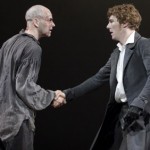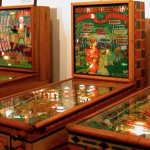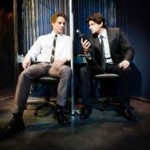 I’ve seen a couple of documentaries lately set in the artistic echelons of New York that have completely refreshed the way in which that world operates.
I’ve seen a couple of documentaries lately set in the artistic echelons of New York that have completely refreshed the way in which that world operates.
The first was Herb & Dorothy, a heart-warming and insightful film about Dorothy and Herbert Vogel, an New York couple of very modest means (she was a librarian and he worked nights sorting mail at the post office), who became unlikely but very prolific and respected collectors of contemporary art. I blogged about that movie here.
A few nights ago, I saw Bill Cunningham New York, a film about a longtime New York Times fashion photographer, Bill Cunningham. The movie treads similar thematic terrain to Herb & Dorothy in that it shows how you don’t have to be glamorous or rich or young to be part of the cultural haute-monde.
The film tells the story of Bill Cunningham who on the surface cuts an unlikely figure in the New York fashion world. A confirmed bachelor with only one love in his life — taking pictures of beautiful clothes and accessories — Cunningham lives exceedingly modestly. Until recently, he resided in a tiny Carnegie Hall apartment packed with filing cabinets full of his photo archives and notes. The movie follows him around on his bike each day as he snaps pictures of interesting clothes on people he sees around New York for his column.
Beyond being a delightful document of one man’s passion for fashion, the film is also interesting for its despiction of the elderly residents of Carnegie Hall, the last of whom were moved out at around the same time that the film was made to make room for offices. In my favorite scene, Cunningham hangs out with a couple of his amazing neighbors, including a barmy but fantastic octogenarian portrait photographer (I forget her name) who likes to dress up as a ballerina and dance the Dying Swan solo from Swan Lake. Tantalizing stuff.
Both Herb & Dorothy and Bill Cunningham New York are great, life confirming films for a rainy day or dark night.
P.S. Extended absence greeting: I’ve just returned from Canada and am now off to Arizona for a week. I will be back with you upon return from my desert adventure.











